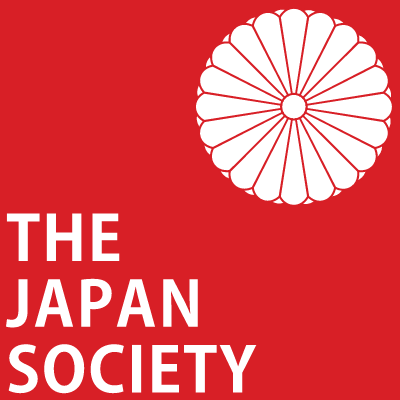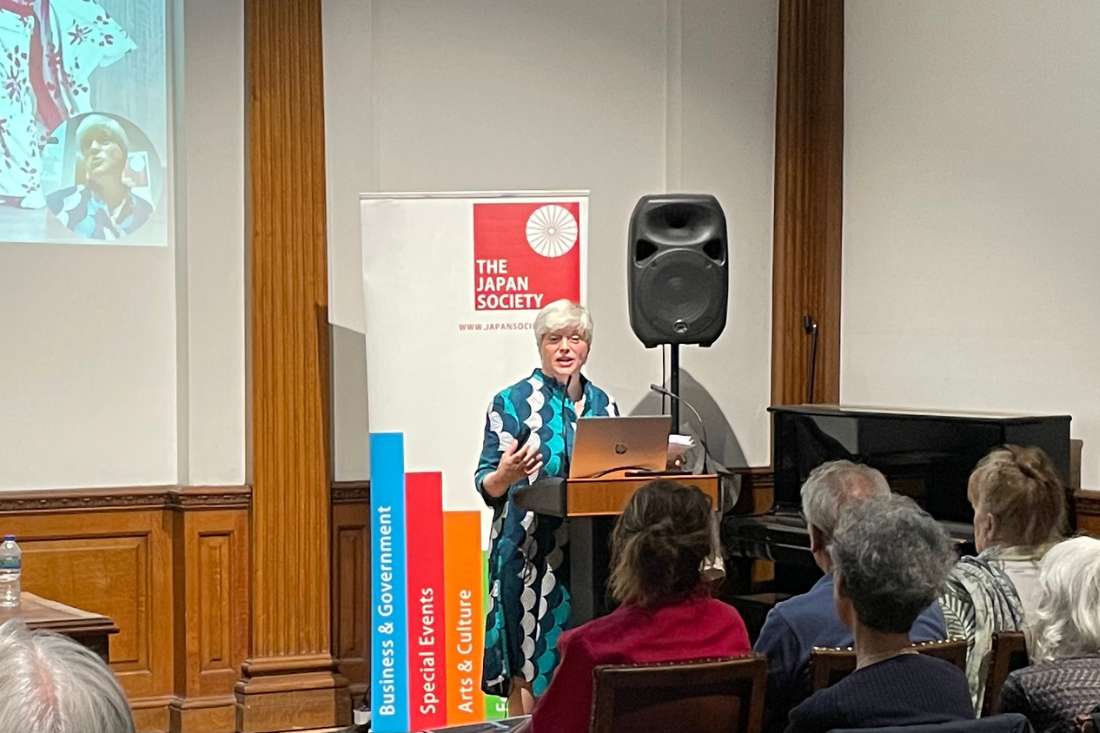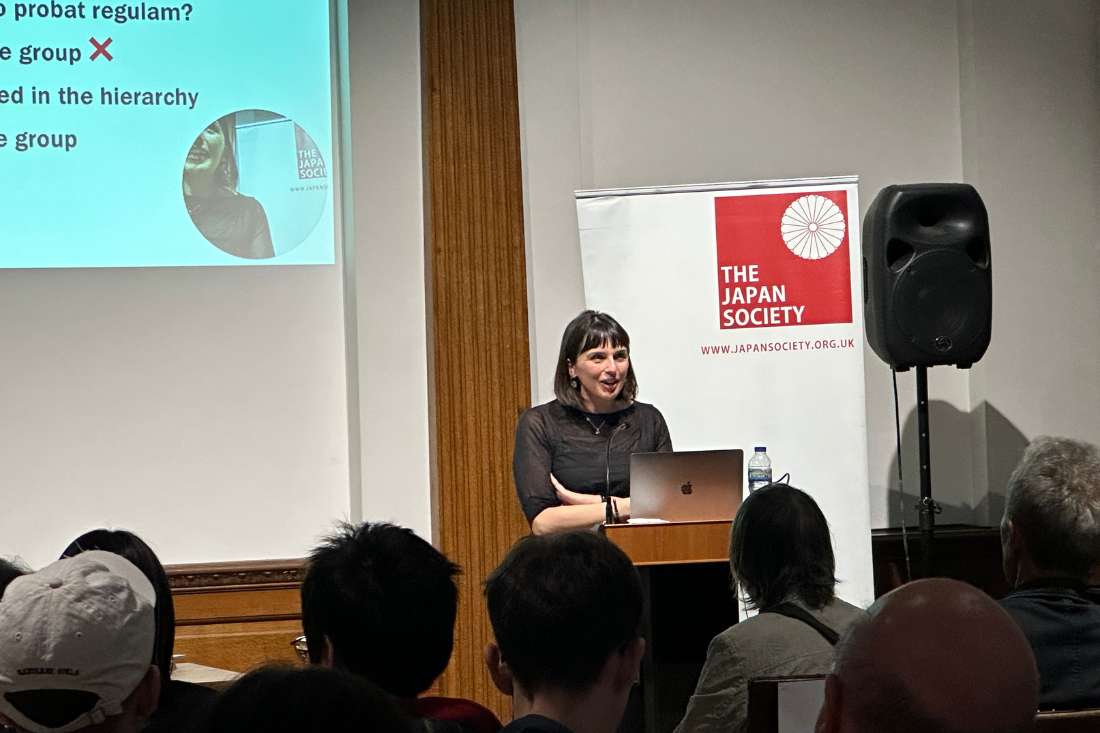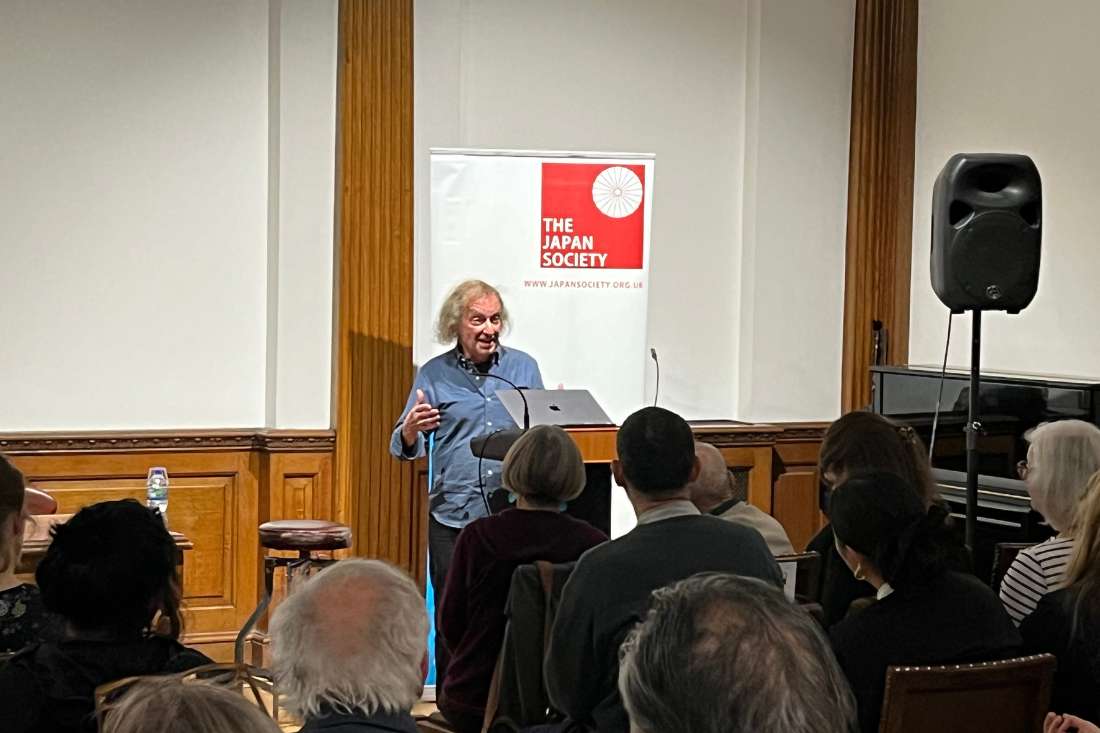The Japan Society Public Lecture Series: July - September 2024

The Japan Society Public Lecture Series hosts monthly lectures delivered by academics and experts on specialised subjects related to Japan and Japanese studies. Lectures are free and open to all at the Swedenborg Society in central London. In July, August, and September 2024, we featured an engaging line-up, exploring topics such as the first Japanese acrobats in Britain and their impact, the influential roles of women within the yakuza crime syndicate, and the creation and development of the Mingei Film Archive.
We would like to thank our speakers Pernille Rudlin, Martina Baradel and Marty Gross and everyone attending the lectures. Special thanks to the Toshiba International Foundation for their support.
Below is a review of the lectures conducted in July, August and September 2024.
Click here for upcoming lectures and Join The Japan Society Mailing List to stay informed of future events.
15 July - Karuwaza, a Risky Business: Japanese Acrobats in Victorian Britain – Pernille Rudlin
In this lecture, Pernille Rudlin explored the origins and legacies of the first Japanese settlers in Britain; the acrobats that toured outside of Japan as part of travelling performance troupes.
Beginning with speculation as to why Japanese acrobats began to travel outside of Japan, Rudlin explored the impact of the decline and eventual collapse of the Shogunate in the late 1860s. Having previously relied upon the patronage of the shoguns and various daimyos, these street performers soon found that their primary source of income came from the foreigners that had been allowed to settle in Yokohama and Nagasaki. As the Bakugatsu government and then later the Meiji government started regulating street performances and closing them down, Rudlin observed that for many performers it may have been more a case of being pushed from Japan, than choosing to leave. The Meiji government then effectively ‘dumped’ systems put in place by the Bakugatsu to allow these performer’s return to Japan, effectively forcing them to settle elsewhere.
Rudlin then went on to explore the most famous figures from the time period, such as Tannaker Buhicrosan who, after a colourful history running his ‘Great Dragon Japanese Troupe’, was credited later for operating the Japanese Village exhibition in Knightsbridge from 1885 to 1887. Although no picture has been confirmed featuring him, Rudlin shared some of the pictures from her work with the descendants of Japanese migrants, along with her theories of which pictures could potentially show Tannaker’s face. Many of Tannaker’s descendents seem to have married Europeans and settled permanently, although some Japanese migrants chose to continue travelling, performing globally. (In particular, Rudling made a brief honourable mention of Fukushima’s Royal Japanese troupe’s performance for the Japan society in 1901).
Rudlin ended her lecture by sharing her findings on the descendants of the first Japanese migrants, as well as their navigation of the turbulent first half of the twentieth century. Most well-known of these descendants is Sadakazu Uyenishi who, along with Luisa Murakami, started the practice of teaching jujutsu to the suffragettes.
19 August - The Importance of Being an Anesan: Women in the Yakuza – Martina Baradel
Sharing her findings from her extensive fieldwork and personal acquaintance with Yakuza members, in this lecture Martina Baradel explored the power structure of Japan’s notorious crime syndicates, and the often-overlooked contributions of the women involved therein.
Starting with a brief look at the power structure of the yakuza, Baradel described an all-male society, structured around the fictive familial relationships epitomised by the oyabun-kobun (father-son) hierarchy. Baradel in particular highlighted the difference between being part of the Yakuza ‘group’ and being part of its ‘network’. Although women aren’t permitted in the group, due to a perceived lesser capacity for violence, they are a key part of the Yakuza’s network.
Aside from tennage girls that take part in the Yakuza’s youth groups helping with supplying, transporting and distributing, some women are permitted to take more supportive roles, granted to them by their connection to an active male Yakuza member. Most commonly, the wives and partners of prominent Yakuza members (referred to as Anesan) become responsible for the day-to-day running of their partner’s crime syndicates, handling any details designated too insignificant for their partner’s attention. The Anesan is also responsible for acting as a mediator between members in conflict, initiating junior members, and caring for any Yakuza members in prison.
Baradel then went on to discuss the presence of women in the Yakuza that had rare stand-out leadership roles over the years, such as Taoka Fumiko. The wife of the third-generation Yamaguchi-gumi boss Taoka Kazuo, due to her acknowledged experience with Yakuza dealings she was instrumental in the decision-making process regarding her husband’s successor. Baradel also shared her experiences of talking with the extraordinary Nishimura Mako, exploring her uniquely prominent position in the organisation as well as her reputation as the “master of finger-cutting,”. Baradel even provided video footage of the moment Nishimura, after years of declaring her desire to be an official member of the Yakuza, underwent the sakazuki; the yakuza’s ritual of affiliation. She is the only woman known to have done so.
Baradel finished her lecture by concluding that although there are known roles for women in affiliation with the Yakuza, and their contributions are key to the organisation’s function day-to-day, these roles are only semi-formal. Anesans can be replaced easily if their partner decides to take a mistress, and there are no roles that aren’t granted to women by the men in the group.
In this lecture, filmmaker and potter Marty Gross offered a thoughtful overview of the evolution of the Mingei Film Archive—a project devoted to preserving the legacy of craftsmanship across Japan and beyond. Drawing from his experience in both pottery and filmmaking, Gross illustrated how the archive has developed from a personal passion into an invaluable resource encompassing over 60 films that capture traditional craftsmanship in pottery, paper, woodcraft, and textiles.
Gross began by outlining the origins and influence of the Mingei Movement, crediting founders Bernard Leach, Hamada Shoji, and Yanagi Soetsu for popularizing a philosophy of craftsmanship that celebrates the beauty of everyday objects. Founded in 1926, the movement elevates traditional Japanese crafts by emphasizing their cultural and spiritual significance. Gross clarified that his aim was not to enter into debates surrounding the Mingei philosophy, but rather to share its legacy through a curated selection of films that document these fading practices. Through this work, Gross has helped ensure that the voices and techniques of rural craft makers from Japan, Korea, and beyond will not be forgotten.
As Gross presented footage from Bernard Leach’s 1934–35 films, the audience was introduced to the close, often rugged lives of artisans such as Hamada Shoji and Minagawa Masu. Leach’s camera captured scenes of Shoji at his wheel, Kawai Kanjiro at work, and Masu decorating pottery in Mashiko. Gross enriched these silent films with modern audio commentaries from contemporary craftspeople, allowing viewers to draw connections between the timeless techniques of the past and those still practiced today.
Gross went on to discuss the challenges of film preservation, noting the fragile condition in which many of these films were found, often bearing extensive damage from decades of neglect. The restoration process, Gross explained, required a meticulous approach; early filmstock is notoriously delicate and prone to decay, and he enlisted experts in Canada and the United States to assist in salvaging these historical records. His careful restoration work has brought these valuable images back to life, ensuring their continued influence.
Concluding his lecture, Gross highlighted the Archive’s role as a bridge between eras, connecting today’s audiences with the values of skill and care that lie at the heart of handcrafted objects. Through the Mingei Film Archive, Gross invites us to re-engage with these traditions, preserving a cultural legacy that reflects the lasting value and dignity of craft.
After the lecture, during the Q&A, Bernard Leach’s grandson, David Kendall, briefly spoke to acknowledge and commend Marty Gross for his dedication to the project.
Supported by the Toshiba International Foundation (TIFO)





